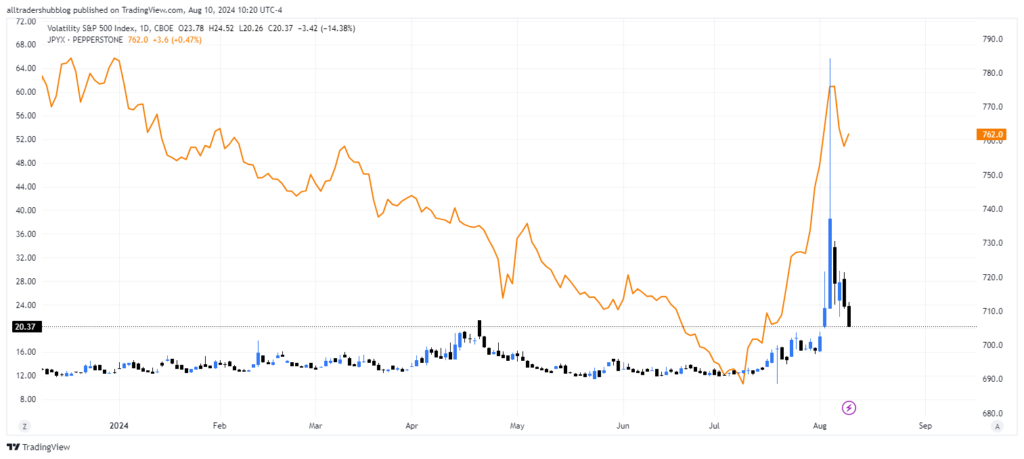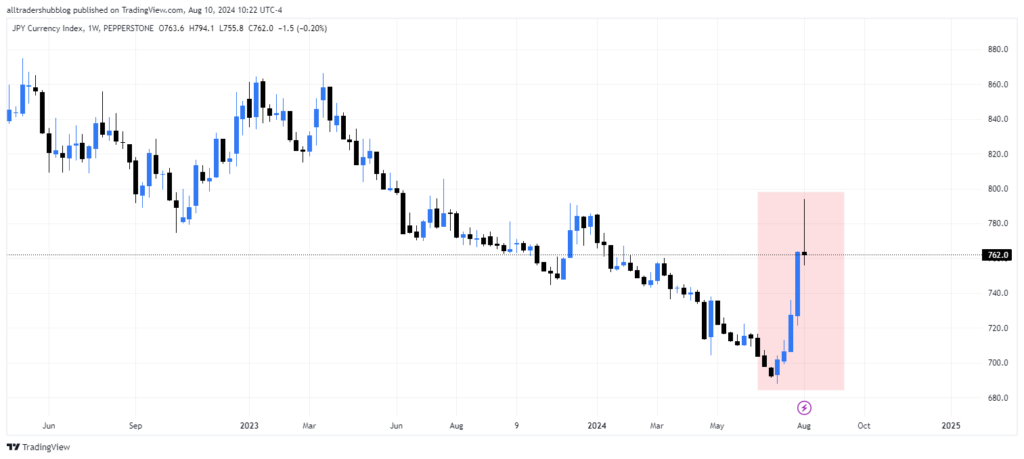When market turbulence strikes, traders often seek refuge in what are known as safe-haven currencies. But what exactly are these currencies, and how can you trade them during times of uncertainty?
In this article, we’ll dive into the concept of safe-haven currencies, explore why they are favored during economic downturns, and look at how the recent behavior of the Japanese yen highlights their significance.
What Are Safe-Haven Currencies?
Safe-haven currencies are those that investors flock to during times of financial instability, geopolitical tension, or economic uncertainty. These currencies are perceived as stable, reliable, and less likely to experience extreme volatility when global markets are in turmoil. Essentially, they act as a “safe place” for capital when other assets or currencies are considered too risky.
The most commonly recognized safe-haven currencies include:
- Japanese Yen (JPY): The yen is often seen as the ultimate safe-haven currency, largely due to Japan’s strong financial system, low inflation, and large foreign reserves. Despite Japan’s own economic challenges, the yen tends to appreciate during global risk-off periods.
- Swiss Franc (CHF): Switzerland’s long-standing political neutrality, robust economy, and strong banking system make the Swiss franc another go-to safe-haven currency. The Swiss National Bank (SNB) often intervenes to prevent excessive appreciation, but the CHF remains a popular choice during crises.
- U.S. Dollar (USD): The U.S. dollar, while also a global reserve currency, is often sought after during times of global uncertainty. The size and stability of the U.S. economy, combined with its deep financial markets, contribute to the dollar’s safe-haven status.
Why Do Traders Flock to Safe-Haven Currencies?
In uncertain times, traders and investors tend to prioritize capital preservation over high returns. Safe-haven currencies offer them a way to park their money in assets that are likely to maintain their value or even appreciate as other investments lose value. Several factors contribute to the appeal of safe-haven currencies:
- Economic Stability: Safe-haven currencies are usually from countries with strong, stable economies that are less vulnerable to global shocks.
- Low Volatility: These currencies tend to be less volatile compared to others, providing a more predictable and stable store of value.
- Liquidity: Safe-haven currencies are typically highly liquid, meaning they can be easily bought and sold without causing large price movements.
- Investor Confidence: The historical performance of these currencies during past crises boosts investor confidence that they will continue to perform well in future downturns.
How to Trade Safe-Haven Currencies
Trading safe-haven currencies requires an understanding of global market sentiment and the ability to anticipate how different events might affect investor behavior. Here’s a step-by-step guide on how to approach trading these currencies:
Monitor Global Events
Keep a close eye on geopolitical developments, economic data releases, and major financial news. Events such as elections, wars, natural disasters, or economic downturns can trigger a flight to safety.
Assess Market Sentiment
Use indicators like the VIX (Volatility Index), which measures market risk, to gauge overall sentiment. A rising VIX often signals increasing fear in the markets, which may lead to a stronger demand for safe-haven currencies.

Identify Entry Points
Look for technical levels in the charts where safe-haven currencies might be poised to break out. Support and resistance levels, moving averages, and Fibonacci retracement levels can help identify potential entry points.
Watch for Central Bank Actions
Central banks in countries with safe-haven currencies sometimes intervene to prevent excessive currency appreciation. For instance, the Swiss National Bank has been known to take such measures. Be aware of these possibilities as they can impact your trades.
Diversify Your Portfolio
Instead of putting all your capital into one safe-haven currency, consider diversifying across multiple safe-havens or even adding other low-risk assets like gold to your portfolio.
The Recent Case of the Japanese Yen
The Japanese yen has long been a go-to safe-haven currency, but recent events have highlighted its continued significance in the global forex market. In 2023, as global economic concerns mounted, including worries about a potential recession in major economies and geopolitical tensions, the yen experienced a notable surge.

Several factors contributed to this:
Global Economic Uncertainty: The prospect of slower growth in the U.S., Europe, and China led investors to seek out the yen as a safe haven.
Bank of Japan’s Policy Stance: The Bank of Japan’s (BoJ) continued commitment to its ultra-loose monetary policy has made the yen less attractive during periods of global stability but more appealing when risk sentiment turns sour. Despite the low yields offered by Japanese assets, the yen’s stability attracts investors during times of market stress.
Geopolitical Tensions: Escalating geopolitical conflicts, especially in regions with significant economic ties to Japan, have historically pushed investors toward the yen. The 2023 situation was no different, as investors sought to minimize exposure to riskier assets.
For traders, the yen’s behavior during this period served as a reminder of its role as a safe-haven currency. Those who anticipated the yen’s strength during this time were able to capitalize on its appreciation against riskier currencies.
Conclusion
Understanding safe-haven currencies is essential for navigating the forex market during periods of uncertainty. The Japanese yen, Swiss franc, and U.S. dollar offer traders a refuge when market conditions deteriorate, providing both safety and potential profit opportunities. By staying informed about global events and market sentiment, and by carefully timing your trades, you can effectively trade safe-haven currencies and protect your portfolio during turbulent times.